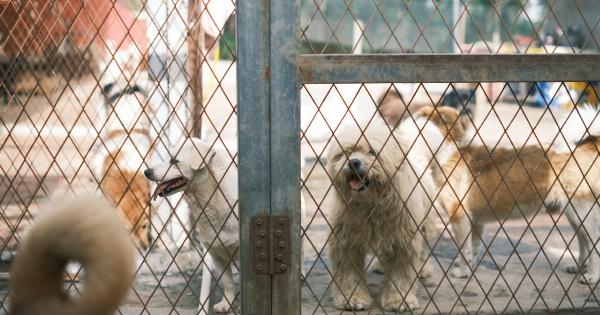Aggressive behavior in dogs can be dangerous and it is important to understand the reasons behind it. Dogs can become aggressive due to various reasons such as fear, dominance, territoriality, and anxiety among others.
If you are a dog owner, it is important to know that you may sometimes be responsible for triggering your dog’s aggression unknowingly. In this article, we will discuss 7 common mistakes that can trigger your dog’s aggression and how to avoid them.
Mistake #1: Lack of Socialization
Socialization is the process of exposing your dog to new people, animals, and surroundings to teach them how to behave in different situations.
If your dog is not socialized, they may become scared or anxious when presented with new situations which can trigger aggression. It is important to socialize your dog at an early age so that they learn how to interact with others in a positive manner.
Additionally, socializing your dog teaches them how to handle stressful situations which can help them avoid aggressive behavior in the future.
Mistake #2: Reinforcing Aggressive Behavior
It’s important to realize that dogs can pick up on certain behaviors and habits that you may not even be aware of. If your dog is acting aggressively, avoid reinforcing the behavior by scolding them or yelling.
This can actually make their aggressive behavior worse. Instead, remain calm and avoid giving them any attention until they have calmed down.
Mistake #3: Lack of Exercise and Mental Stimulation
If your dog isn’t getting enough exercise, it can cause them to become restless and anxious. This can lead to aggressive behavior due to pent up energy.
Make sure your dog gets enough exercise every day to help release any tension or anxiety they may be feeling. Additionally, mental stimulation is just as important as physical exercise. Providing your dog with puzzle toys, obedience training, or even just spending time playing games with them can help reduce their aggression and anxiety levels.
Mistake #4: Offering Too Little or Too Much Attention
Dogs need attention, but it’s important to find a balance. Offering too little attention can cause your dog to feel neglected which can lead to aggression.
On the other hand, offering too much attention can make your dog feel overwhelmed and anxious. It’s important to find a balance and give your dog attention when they need it without overwhelming them.
Mistake #5: Ignoring Your Dog’s Body Language
Dogs often communicate their feelings and emotions through body language. Ignoring your dog’s body language can lead to misunderstandings and cause fear or anxiety which can lead to aggression.
It’s important to understand your dog’s body language and be mindful of how they are feeling in certain situations. For example, if your dog is growling or showing their teeth, it may be a sign that they are feeling anxious or uncomfortable and need to be removed from the situation.
Mistake #6: Punishing Your Dog for Growling or Barking
Growling and barking are forms of communication for dogs and are often signs that they are feeling anxious or uncomfortable.
Punishing your dog for growling or barking can actually make their aggression worse as it can cause them to become more anxious and fearful. Instead, teach your dog an alternative behavior such as “quiet” or “leave it” to redirect their attention and behavior.
Mistake #7: Ignoring Signs of Illness or Pain
If your dog is in pain or ill, it can cause them to become aggressive. Ignoring signs of illness or pain can lead to a more serious health issue and can also cause your dog to be more aggressive.
It’s important to pay attention to any changes in your dog’s behavior or mood and seek veterinary care if necessary. Treating any underlying medical issues can help reduce aggression in your dog.





























